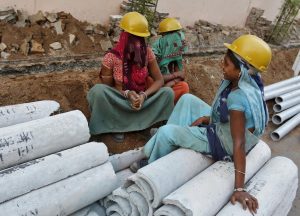Periodic Labour Force Survey (PLFS) 2020-21:

As per the Periodic Labour Force Survey (PLFS) for 2020-21 released by the Ministry of Statistics and Programme Implementation, the unemployment rate saw a decrease of 0.6% and fell to 4.2% in 2020-21, compared with 4.8% in 2019-20
- Data show the rate of joblessness fell to 4.2% in 2020-21, compared with 4.8% earlier
- Rural areas recorded an unemployment rate of 3% and urban areas recorded an unemployment rate of 6.7%.
- The Labour Force Participation Rate (LFPR)e., the percentage of persons in the labour force (that is, working or seeking work or available for work) in the population was 41.6% during 2020-21 (higher than 40.1% in 2019-20).
- All-India female labour force participation rate (LFPR) in usual status has increased from 2.3% in 2021 to 25.1% as compared to 22.8% a year ago
- Worker Population Ratio (the number of employed people per thousand people) was 39.8% (an increase from 38.2% of the previous year)
- The migration rate, according to the survey, is 28.9%. The migration rate among women was 48% and 47.8% in rural and urban areas, respectively.
- Migrants are defined as a household members whose last usual place of residence, at any time in the past, was different from the present place of enumeration.
- Employment-related migration: 4.4% of migration happened due to employment, which is a drastic reduction from the 10% in 2011
- During the pandemic, reverse migration led to a higher rate of unemployment agglomeration in rural areas, which caused rural distress. However, the annual report on the unemployment rate shows a contradiction.
- The National Statistical Office (NSO) uses “rotational panel sampling design” in urban areas to assess the Labour Force Participation Rate (LFPR), Worker Population Ratio (WPR) and the unemployment rate, and visits selected households in urban areas four times. There was, however, no revisit for the rural samples.
- Overall, the report suggests shifting the government’s policy directions as it has become more rural-centric.
- Creation of rural jobs other than in the agricultural sector and MGNREGA (Mahatma Gandhi National Rural Employment Guarantee Act) could be priorities for the government at the Union and State levels.




